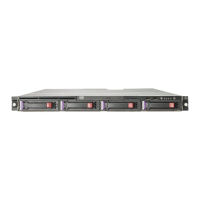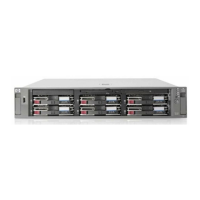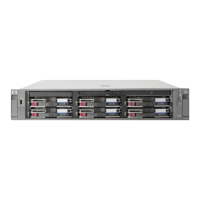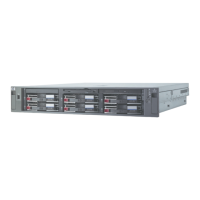NOTE:
Shadow Copies for Shared Folders clients are not available for HTTP, FTP, AppleTalk, or NetWare shares.
Consequently, users of these protocols cannot use Shadow Copies for Shared Folders to independently
retrieve prev ious versions of their files. However, administrators ca n take advantage of Shadow Copies
for Shared Folders to restore files for these users.
SMB shadow copies
Windows users can independently access previous versions of files stored on SMB shares by using the
Shadow Copies for Shared Folders client. After the Shadow Copies for Shared Folders client is installed
on the user’s computer, the user can access shadow copies for a share by right-clicking on the share to
openitsPropertieswindow,clickingthePrevious Versions tab, and then selecting the desired shadow
copy. Users can view, copy, and restore all available shadow copies.
Shadow Copies for Shared Folders preserves the p ermissions set in the access control list (AC L) of the
original folders and files. Consequently, users can only access shadow copies for shares to which they
have access. In other words, if a user does not have access to a share, he also does not have access to
the share’s shadow copies.
The Shadow Copies for Shared Folders client pack installs a Previous Versions tab in the Properties
window of files and folders on network shares.
Users access shadow copies with Windows Explorer by selecting View, Copy,orRestore from the
Previous Ve rsio ns tab. (See Figure 19). Both individual files and folders can be restored.
Figure 19 Client GUI
When users view a network folder hosted on the storage server for which shadow copies are enabled,
old versions (prior to the snapshot) of a file or directory are available. Viewing the properties of the file
60
File server management
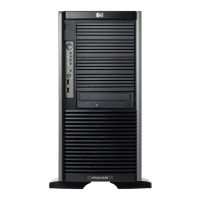
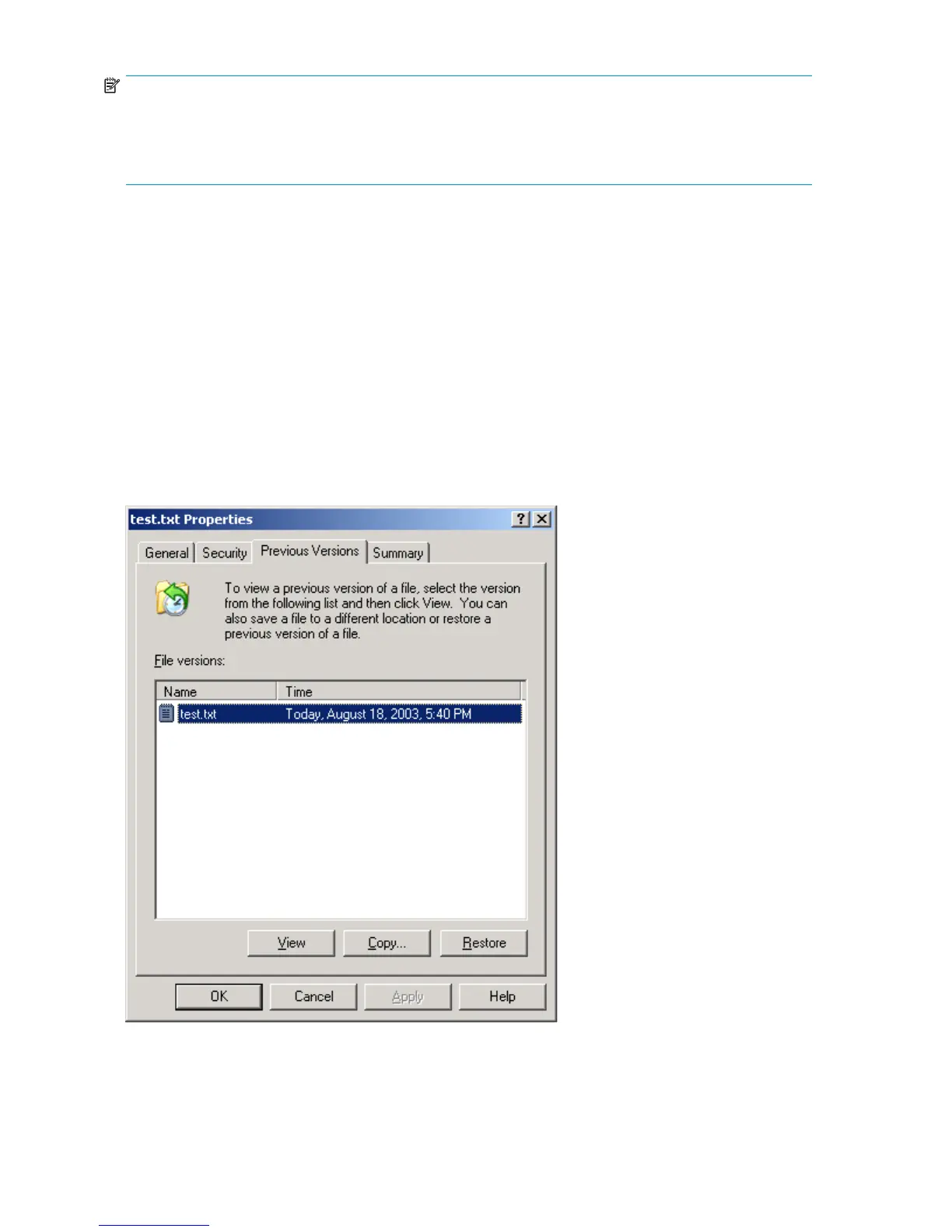